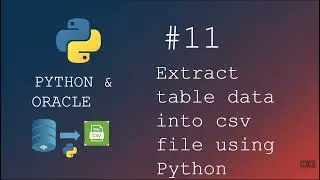LNNVL FUNCTION IN ORACLE SQL | Check NULL value in SQL statement
This video is the 5th video in the series of 'working with null', this video explains the working of the lnnvl function in oracle sql with simple and easy to understand example.
LNNVL provides a concise way to evaluate a condition when one or both operands of the condition may be null. The function can be used only in the WHERE clause of a query.
It takes as an argument a condition and returns TRUE if the condition is FALSE or UNKNOWN and FALSE if the condition is TRUE.
LNNVL can be used anywhere a scalar expression can appear, even in contexts where the IS [NOT] NULL, AND, or OR conditions are not valid but would otherwise be required to account for potential nulls. Oracle Database sometimes uses the LNNVL function internally in this way to rewrite NOT IN conditions as NOT EXISTS conditions.
In such cases, output from EXPLAIN PLAN shows this operation in the plan table output. The condition can evaluate any scalar values but cannot be a compound condition containing AND, OR, or BETWEEN.
Subscribe to the channel : / @kishanmashru
Other Playlists:
Data Warehousing Concepts: • Data Warehousing Concepts
Python and Database: • Python | How to Install python packages
SQL and PL/SQL Interview Questions: • SQL AND PL/SQL INTERVIEW QUESTIONS
SQL and PL/SQL concepts: • SQL and PLSQL
Content and video created by : Kishan Mashru































